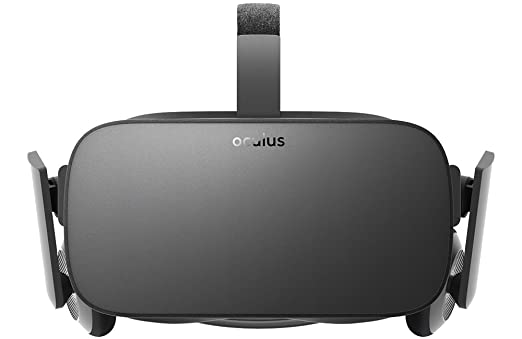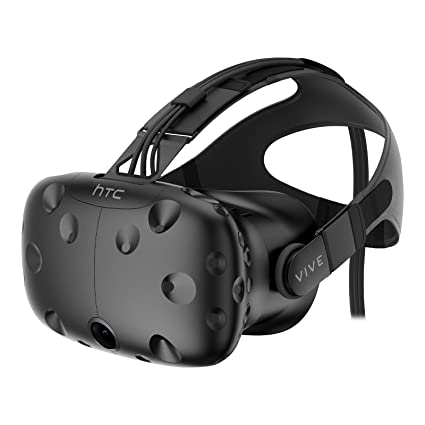Oculus Rift vs HTC VIVE
When you compare the Oculus Rift to the HTC VIVE you can see which VR Headset is better. Let's take a look of the comparison, and see which model of VR Headset out ontop.
What VR Headset is better?
When it comes to virtual reality headsets, two of the top contenders on the market are the Oculus Rift and HTC VIVE. Both products provide an immersive experience that allows users to truly become one with their environment, and both have a wide range of features that make them stand out among the competition. Here is a closer look at how these two VR headsets compare in terms of specs and performance.
The first thing to consider when looking at these headsets is the field of view (FOV) they offer. Both devices provide an impressive 110° FOV which allows users to feel fully immersed in their surroundings, with no distortion or obstruction present in their vision.
When it comes to resolution, both sets also come with 1080 × 1200 px resolutions which provides crisp images without any visible lag or artifacts. This ensures that users get clear visuals even when they’re moving around quickly or using multiple objects at once within their virtual world.
In terms of system requirements, both headsets require a minimum CPU requirement ranging from Intel i3-6100 for Oculus Rift and Intel I5-4590 for HTC VIVE. For graphics requirements, Oculus Rift requires Nvidia GTX 1050Ti while HTC VIVE requires Nvidia GeForce™ GTX 1060 or AMD Radeon™ RX 480 respectively. This makes them both accessible by most gamers as long as they meet these requirements; however, those with higher end systems will benefit from better performance and visuals compared to entry level systems.
Another great feature offered by both sets is room scale tracking which enables gamers to move freely throughout the room without being restricted by wires connected from headset to PC/console etc., thus allowing for more freedom when playing games such as Beat Saber where movement plays a major role in scoring points and completing levels successfully! Furthermore, both headsets also provide 360 tracking for added accuracy when interacting with your environment through motion controllers included with each set up package - this allows you to navigate smoothly without having any obstructions blocking your way in-game! Lastly, refresh rate is consistent across both products offering 90 Hz rates - this keeps everything smooth ensuring you don't experience any visual stutter or lag whilst gaming!
Overall after testing out both VR Headsets I found myself preferring the Oculus Rift due to its simple setup process allowing me quick access into my virtual environment without going through numerous steps before I could start playing; its user interface was far easier than that provided by HTC VIVE which can be quite intimidating if you’ve never used VR before (although experienced users may prefer this). Additionally I found comfort wise there wasn’t much difference between either product but what did stand out was that certain parts felt like plastic against my skin rather than fabric making it slightly uncomfortable during longer sessions – something other potential buyers should bear in mind when deciding on a headset type! In conclusion if you’re looking for an easy setup process coupled with great graphical fidelity then go ahead with the Oculus Rift; however if you want something more powerful then perhaps opt for HTC VIVE instead!
Specs comparison between the two VR Headsets
| Oculus Rift | HTC VIVE | |
|---|---|---|
| Overview | ||
| Brand | Meta | HTC |
| Model Name | Rift | VIVE |
| Release Date | 2016 | 2016 |
| Country of Origin | United States | Taiwan |
| Category | PC VR | PC VR |
| Battery Life | 3 h | 2.5 h |
| Display | ||
| Field of View | 110° | 110° |
| Resolution | 1080 × 1200 px (per eye) | 1080 × 1200 px (per eye) |
| Refresh Rate | 90 Hz | 90 Hz |
| Display Type | OLED | OLED |
| Minimum Requirements | ||
| Min. CPU Required | Intel i3-6100 or AMD Ryzen 3 1200, FX4350 or greater | Intel I5-4590 or AMD FX 8350 |
| Min. Graphics Required | Nvidia GTX 1050Ti or AMD Radeon RX 470 or greater | Nvidia GeForce™ GTX 1060 or AMD Radeon™ RX 480 |
| Min. RAM Required | 8 GB | 4 GB |
| Operating Systems | Microsoft Windows | Microsoft Windows |
| Sizing | ||
| Weight | 470 g | 470 g |
| Dimensions | 184 × 114 × 89 mm | 199 × 122 × 122 mm |
| Features | ||
| Room Scale? | YES | YES |
| 360 Tracking? | YES | YES |
| Positional Tracking? | YES | YES |
| Front Camera? | No | YES |
| Eye Tracking? | No | |
| Usable with Glasses? | YES | YES |
| Cooling System | No | No |
| Built in Headphones? | YES | No |
| Built in Microphone? | YES | YES |
| Flip Visor? | No | YES |
| Voice Command? | YES | YES |
| IPD Adjustment? | YES | YES |
| Lens to Eye Adjustment? | YES | YES |
| USB? | YES | YES |
| MicroUSB? | No | No |
| Display Port? | No | YES |
| Mini Display Port? | No | No |
| HDMI? | YES | YES |
| MicroSD? | YES | YES |
| Bluetooth? | YES | YES |
| Wifi? | No | YES |

